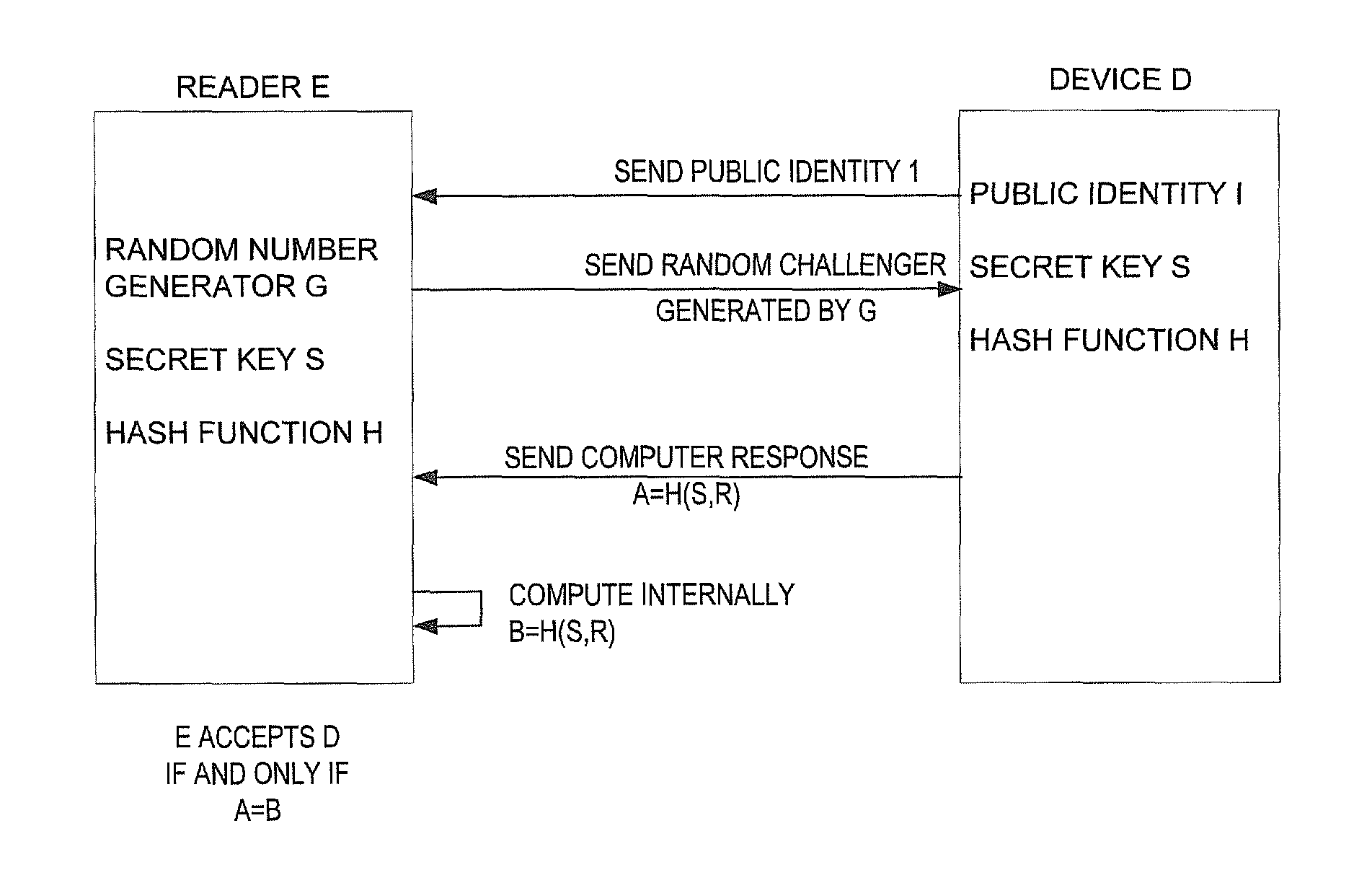Method and apparatus for implementing a novel one-way hash function on highly constrained devices such as RFID tags
a technology of highly constrained devices and one-way hash functions, which is applied in the field of method and apparatus for implementing a novel one-way hash function on highly constrained devices such as rfid tags, can solve the problems of not being able to perform general modular squaring operation on a severely limited rfid tag, and no way in which a legitimate tag will fail, etc., to achieve convenient factoring, easy storage, and save a lot of storag
- Summary
- Abstract
- Description
- Claims
- Application Information
AI Technical Summary
Benefits of technology
Problems solved by technology
Method used
Image
Examples
Embodiment Construction
[0039]FIG. 1 shows schematically and in block diagram a standard challenge-response authentication protocol for devices such as RFID tags. As shown in FIG. 1, is a reader E communicating with a device D. The reader E contains a random number generator G, a secret key S and a hash function H. The device D contains a public identity I, the secret key S and hash function H. In the communication exchange, the reader E sends to the device D a random challenge R generated by random number generator G. The device D sends to the reader E its public identity I, and sends to reader E a computed response A=H(S,R). Reader E computes internally B=H(S,R). Reader E accepts device D if and only if A=B.
[0040]The most compact implementation of the method and apparatus of the present invention is to use a single feedback shift register FSR in order to generate all the required bits by running it forwards and backwards as necessary, as described and as shown in FIG. 2. However, this requires quadratic ...
PUM
 Login to View More
Login to View More Abstract
Description
Claims
Application Information
 Login to View More
Login to View More - R&D
- Intellectual Property
- Life Sciences
- Materials
- Tech Scout
- Unparalleled Data Quality
- Higher Quality Content
- 60% Fewer Hallucinations
Browse by: Latest US Patents, China's latest patents, Technical Efficacy Thesaurus, Application Domain, Technology Topic, Popular Technical Reports.
© 2025 PatSnap. All rights reserved.Legal|Privacy policy|Modern Slavery Act Transparency Statement|Sitemap|About US| Contact US: help@patsnap.com



